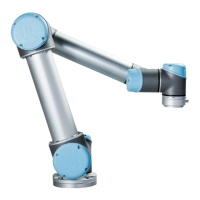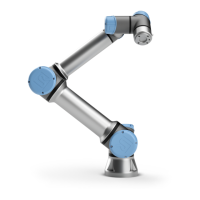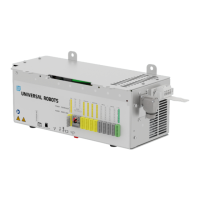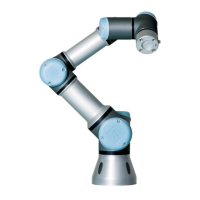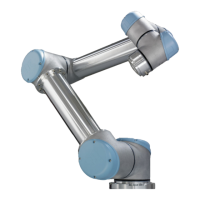10.13 Safety I/O
10.13 Safety I/O
This screen defines the Safety functions for configurable inputs and outputs (I/Os). The I/Os are
divided between the inputs and outputs, and are paired up so that each function is providing a
Category
2
3 and PLd I/O.
Each Safety function can only control one pair of I/Os. Trying to select the same safety function a
second time removes it from the first pair of I/Os previously defined. There are 5 Safety functions
for input signals, and 5 for output signals.
Note: Applying a safety function to a set of pins will override any I/O actions specified for pins
in the I/O Setup (see 13.8).
10.13.1 Input Signals
For input signals, the following Safety functions can be selected: System Emergency Stop,
Reduced Mode, Safeguard Reset, Three-Position Enabling Device and Operational
Mode.
System Emergency Stop When configured, it allows for having an additional Emergency
Stop button besides the Emergency Stop Button on the Teach Pendant. This functionality
requires the use of an ISO 13850-compliant device.
Reduced Mode All safety limits have two modes in which they can be applied: Normal mode,
which specifies the default safety configuration, and Reduced mode (see 10.6 for more details).
When this input safety function is selected, a low signal given to the inputs causes the safety
system to transition to Reduced mode. If necessary, the robot arm then decelerates to satisfy the
2
According to ISO 13849-1, see Glossary for more details.
e-Series II-18 Version 3.11
Copyright © 2009–2019 by Universal Robots A/S. All rights reserved.
